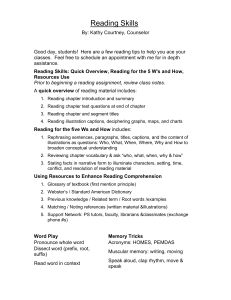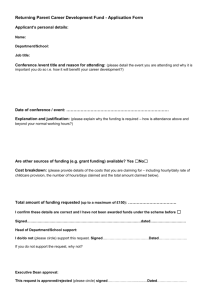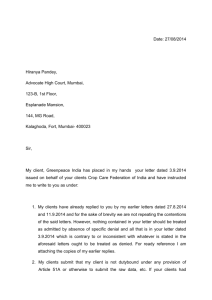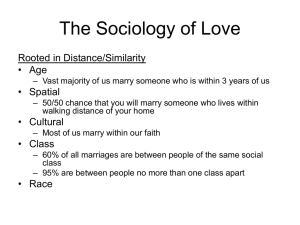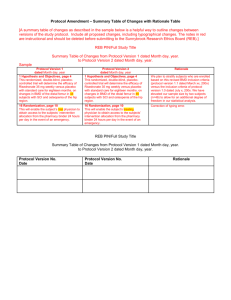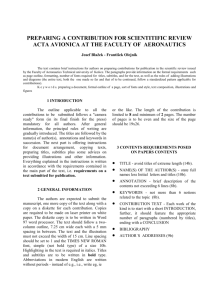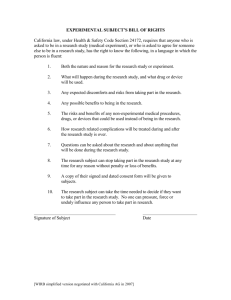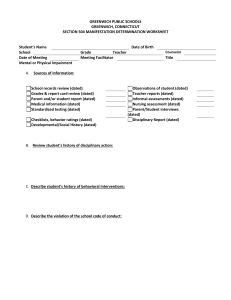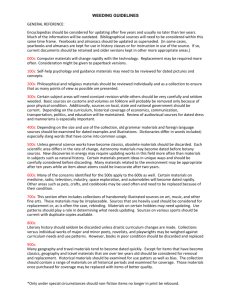BentonAssessHandout - 2015 ALA Annual Conference
advertisement
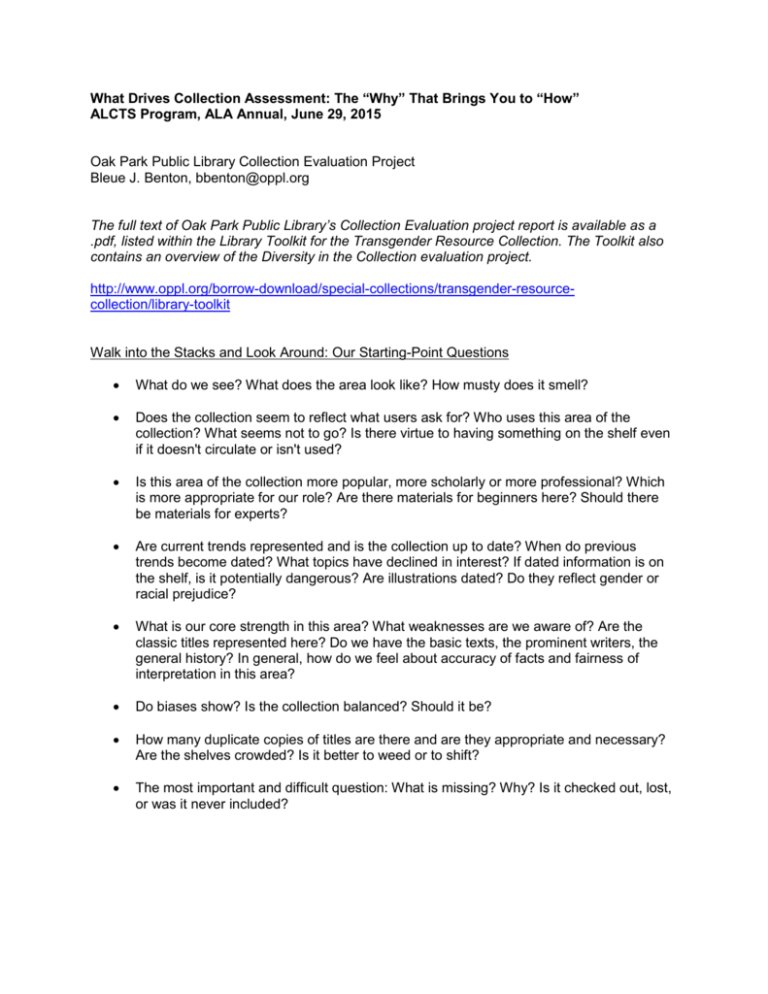
What Drives Collection Assessment: The “Why” That Brings You to “How” ALCTS Program, ALA Annual, June 29, 2015 Oak Park Public Library Collection Evaluation Project Bleue J. Benton, bbenton@oppl.org The full text of Oak Park Public Library’s Collection Evaluation project report is available as a .pdf, listed within the Library Toolkit for the Transgender Resource Collection. The Toolkit also contains an overview of the Diversity in the Collection evaluation project. http://www.oppl.org/borrow-download/special-collections/transgender-resourcecollection/library-toolkit Walk into the Stacks and Look Around: Our Starting-Point Questions What do we see? What does the area look like? How musty does it smell? Does the collection seem to reflect what users ask for? Who uses this area of the collection? What seems not to go? Is there virtue to having something on the shelf even if it doesn't circulate or isn't used? Is this area of the collection more popular, more scholarly or more professional? Which is more appropriate for our role? Are there materials for beginners here? Should there be materials for experts? Are current trends represented and is the collection up to date? When do previous trends become dated? What topics have declined in interest? If dated information is on the shelf, is it potentially dangerous? Are illustrations dated? Do they reflect gender or racial prejudice? What is our core strength in this area? What weaknesses are we aware of? Are the classic titles represented here? Do we have the basic texts, the prominent writers, the general history? In general, how do we feel about accuracy of facts and fairness of interpretation in this area? Do biases show? Is the collection balanced? Should it be? How many duplicate copies of titles are there and are they appropriate and necessary? Are the shelves crowded? Is it better to weed or to shift? The most important and difficult question: What is missing? Why? Is it checked out, lost, or was it never included? Diversity in the Collection: Serving, Welcoming, and Reflecting Everyone 1. Throughout the library, open up discussion on the general subjects of diversity, collection balance, and unintended bias. Create opportunities to brainstorm and ponder the issues involved. Discuss open, hidden, and institutionalized racism, sexism, ageism, etc. 2. Out of this discussion, pull together a staff committee. Look for thoughtful and creative thinkers, and reflect as much diversity as possible. 3. Create the framework. What parts of the collection do you want to evaluate? What groups of people do you want to consider? 4. Are there any helpful checklists to compare against library holdings? 5. Have all committee members participate in direct examination of the collection, addressing the following questions: Is this collection welcoming to people within the population group? Does it reflect them? Are there materials by authors (or directors, actors, musicians, etc.) who belong to this group? Are there titles, subjects, and content that represent the population group? What issues, concerns, or trends are particularly important or relevant to people within this population group? Do we have materials on these subjects? Is the age of this collection an issue? Are there outdated and offensive references, illustrations, use of language? What are our goals and aspirations for this collection? What should the collection be? 6. Open up the evaluation process. Consider bringing in an expert, if possible. Recruit a focus group of people from the community, reflecting as much diversity as possible. 7. A final written report should include summaries of discussions and direct examinations of the collection, as well as the results of list checking. It should include specific steps to improve and promote the collection.
